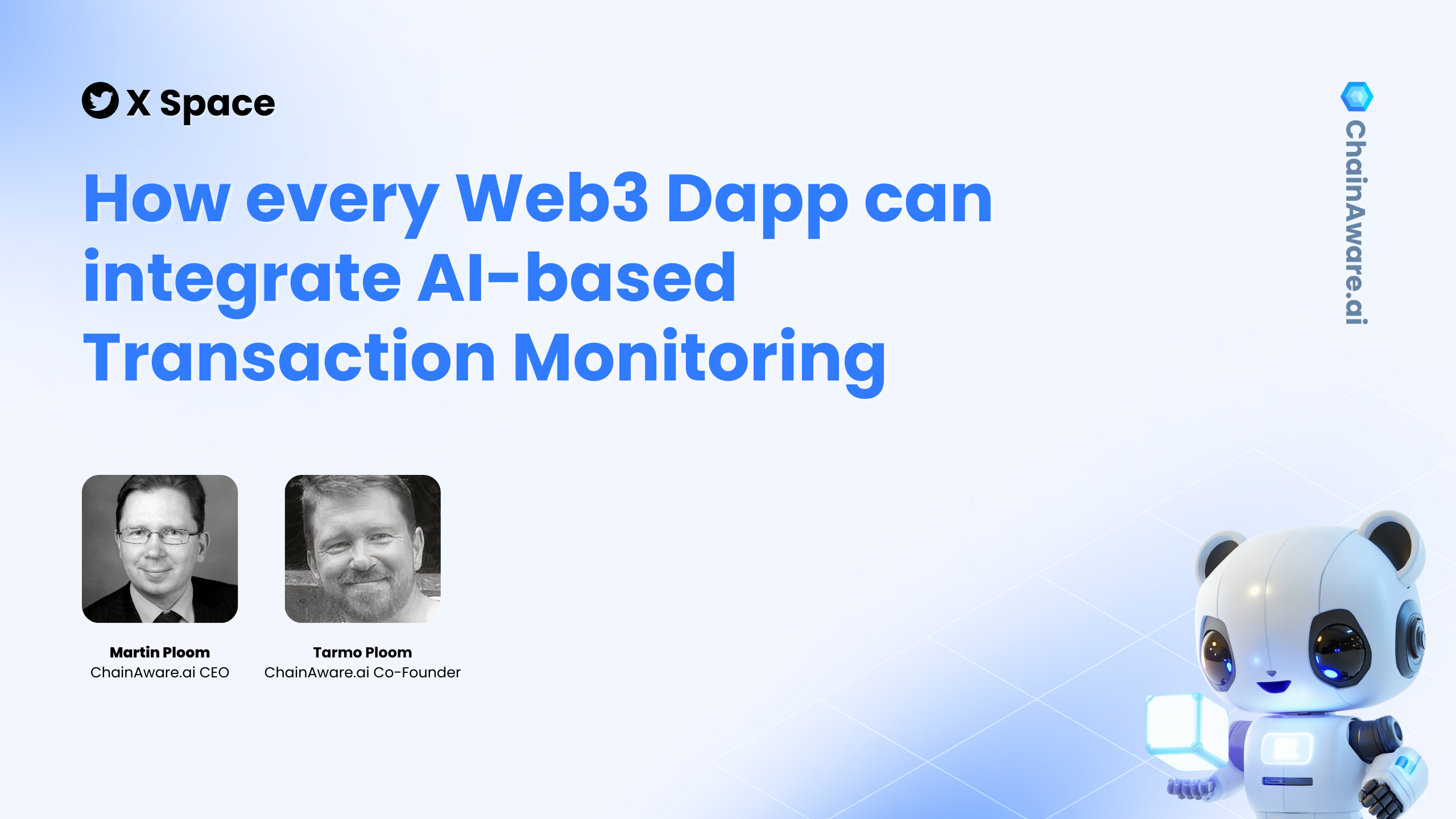Martin from ChainAware.ai shared insights on how AI-powered predictions can make a difference, focusing on real-time fraud detection, rug pull prevention, and targeted marketing. Below is a summary of our conversation.
Listen X-space: https://x.com/MagicSquareio/status/1861039646605475916
From SmartCredit.io to ChainAware.ai
Martin and Tarmo first created SmartCredit, a fixed-term, fixed-interest DeFi lending and borrowing platform. They built AI models for credit scoring and fraud detection during its development. Those tools evolved into ChainAware.ai, a comprehensive prediction engine that:
- Identifies and predicts fraud
- Detects and warns about upcoming rug pulls
- Audits wallets to gauge trustworthiness
- Calculates user intentions (e.g., whether someone might be a future trader, borrower, or lender)
Rather than chasing price predictions, ChainAware.ai zeroes in on user behavior. If a wallet is likely to engage in fraudulent activity, or if a liquidity pool has a high chance of a rug pull, the system flags it—giving projects and users a way to steer clear of risky interactions.
Why Fraud Detection Matters for Web3
Martin explained that fraud has been a significant hurdle in Web3 adoption, mirroring the early days of the Internet (Web2). Back then, stolen credit card info and rampant online scams deterred people from using e-commerce platforms. Web3 has its own version of these threats—rug pulls, phishing, and impersonation schemes.
- Trust as the Key: Without clear ways to verify addresses or gauge contract safety, new users often lose funds and leave the ecosystem.
- Reducing Bad Actors: ChainAware’s AI-based approach warns users about high-risk wallets or pools before they’re defrauded.
- Supporting Growth: By increasing transparency, projects benefit from more users who are willing to stay after their first or second experience rather than leaving due to scams.
Building AI In-House
ChainAware’s AI models boast 98% accuracy in predicting bad behavior—before it happens. Instead of relying on large language models or off-the-shelf solutions, the team spent over two years refining proprietary algorithms:
- Early Versions: Accuracy started around 60–70%.
- Current System: Achieving 98% accuracy in real time.
- Balancing Speed & Accuracy: Going beyond 98% meant longer computation times, so we prioritized near-instant responses while maintaining high reliability.
This real-time dimension is especially crucial in Web3, where transactions are irreversible once they go through.
Addressing the High Cost of User Acquisition
While fraud detection is the defensive side of the puzzle, another major pain point emerged during the discussion: user acquisition costs (UAC). For many Web3 projects, marketing is largely based on mass outreach (banners, hype campaigns, general crypto media). This approach rarely converts effectively because it isn’t tailored to individual user needs or intentions.
- Comparison to Web2: Companies like Google drastically lowered UAC by analyzing search and browsing data to personalize ads.
- Web3’s Opportunity: ChainAware.ai applies similar personalization—but using on-chain behavior. If someone is a likely borrower, they see lending-focused campaigns. If they’re an advanced trader, they might be shown leverage products instead.
- End Goal: Create one-to-one marketing to resonate with each user’s preferences, thereby driving down UAC and increasing conversions.
IDO Plans and Support from ChainGPT
During the conversation, Martin also mentioned to ChainAware’s upcoming IDO on the ChainGPT Launchpad. The project has secured backing from partners who understand the technical depth of AI-driven solutions, reinforcing ChainAware’s mission to:
- Expand Fraud Detection to new chains.
- Enhance Wallet Auditing so users can trust addresses without exposing personal data.
- Continue Building AI AdTech for more effective, personalized user outreach.
Community Q&A Highlights
Will ChainAware expand to more chains?
Yes. The plan is to roll out the fraud detection and adtech services across multiple networks. The roadmap includes supporting additional ecosystems with full predictive analytics—fraud detection, rug pull warnings, wallet audits, and user-intention calculations.
Competitors and Differentiation
Though other projects provide analytics or contract audits, ChainAware’s strength lies in predictive modeling of wallet behavior and integrated adtech. Their proprietary AI creates a higher barrier to entry for would-be copycats.
Security vs. AI in Wrong Hands
ChainAware emphasizes that AI tools serve as a proactive shield, not a threat. By identifying malicious patterns early, honest players gain a defensive edge, improving overall trust in the Web3 space.
Closing Thoughts
Our talk with Magic Square underscored two core realities of Web3:
- Fraud is rampant, and robust AI-based detection can help create a safer environment.
- High user acquisition costs threaten to slow widespread adoption. Personalized, on-chain analytics offer a solution by delivering the right message to the right user at the right time.
We believe addressing both these hurdles reducing scams through AI-driven insights and lowering marketing expenses with targeted outreach will lay the groundwork for real Web3 growth. Making blockchain interactions safer and more efficient makes the decentralized future far more attainable.
Thank you to Magic Square for hosting and to everyone who contributed questions.







